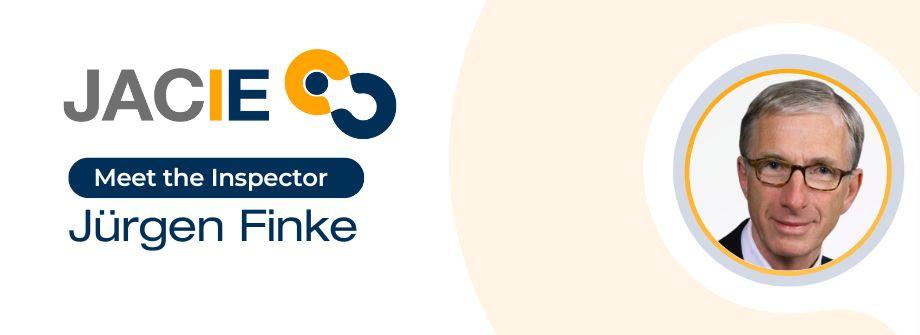
Inspectors are the backbone of JACIE; without them, there is no certification process. Becoming an inspector is a wonderful way to contribute to maintaining global quality standards. As the number of JACIE applications has increased, we are constantly looking for new inspectors to join our ranks. At the moment, we are particularly keen to hear of German, French and Spanish speaking Clinicians and Quality Managers.
Each month, you will have the opportunity to meet with one of our JACIE Inspector who will share his/her experience.
Read our interview with Jürgen Finke.
Introduce yourself and your role(s) and position(s) within EBMT and outside of EBMT
I have worked in the field of stem cell transplantation since 1991 and was Head of Allogeneic stem cell transplantation section from 1994 until 2023 in Freiburg. Since then I am still part of the team in Freiburg as Senior Medical Advisor.
Why did you decide to become a JACIE inspector?
I took part in a JACIE Training Course during the Annual Meeting of the EBMT in Frankfurt, Germany in 2006, because there was a need for inspectors and I wanted to learn more about the system to benefit the upcoming inspections for our own centre. I learned and still learn a lot when visiting centres in various countries, realising there are multiple solutions for the same challenges we have, sometimes very innovative, sometimes a bit strange, and frequently reflecting availability of resources. Through these sometimes subtle but fundamental differences, I got to learn during my inspections, which helped me understand different views, when discussing medical issues with colleagues e.g. at the Annual Meetings of the EBMT. We, as inspectors, always meet in a friendly atmosphere allowing fruitful and collegial discussions. I also like to ask sometimes the colleagues being inspected: "Why are you doing this the way you are doing it?"
What has been the most memorable inspection that you have ever done?
Once, the inspection team realised only after the 1st day's morning presentation, that apart from patient care, all other parts were done outside in different sites up to 150 km away and my co-inspectors quickly left for the rest of the inspection leaving me alone for the clinical part and as team leader.
Otherwise, JACIE inspections nowadays extend far beyond Europe and I was lucky to visit the first JACIE inspected Centre in Australia in Sydney, which was fun and also good to see that the JACIE spirit appears very convincing worldwide.
What ‘keys to successful JACIE certification’ can you share with us?
Success of an inspection depends on inspector´s adequate commitment before inspection by going through every document available, when in need, requesting further information, begin with infrastructure and organigrammes / responsibilities, checking the internet for further information regarding the Hospital at large, as well as personnel involved in transplantation regarding academic standing, publications etc.
How has your career/work benefited from being a JACIE inspector?
Frequently, I come back from inspection and introduce novel procedures and practical things in our centre, influencing SOPs, etc. and in addition, help to reflect what we are doing right at home.
Also the knowledge gained from participating in JACIE inspections outside help us to be prepared for JACIE inspections of our centre.
Do you have any tips or advice for anyone who aspires to become a JACIE Inspector?
In summary, do become an inspector and support the international spirit of JACIE: most solutions are available around the corner and there is always something that can be improved for the benefit of our patients. And then it is fun to exchange with colleagues in different countries and make friends as well.
The international audit system is an important tool to get away from eminence based Medicine ("we have done this for so many years and we are happy with our results…") to up-to-date state-of-the art evidence based bench-marked patient care.